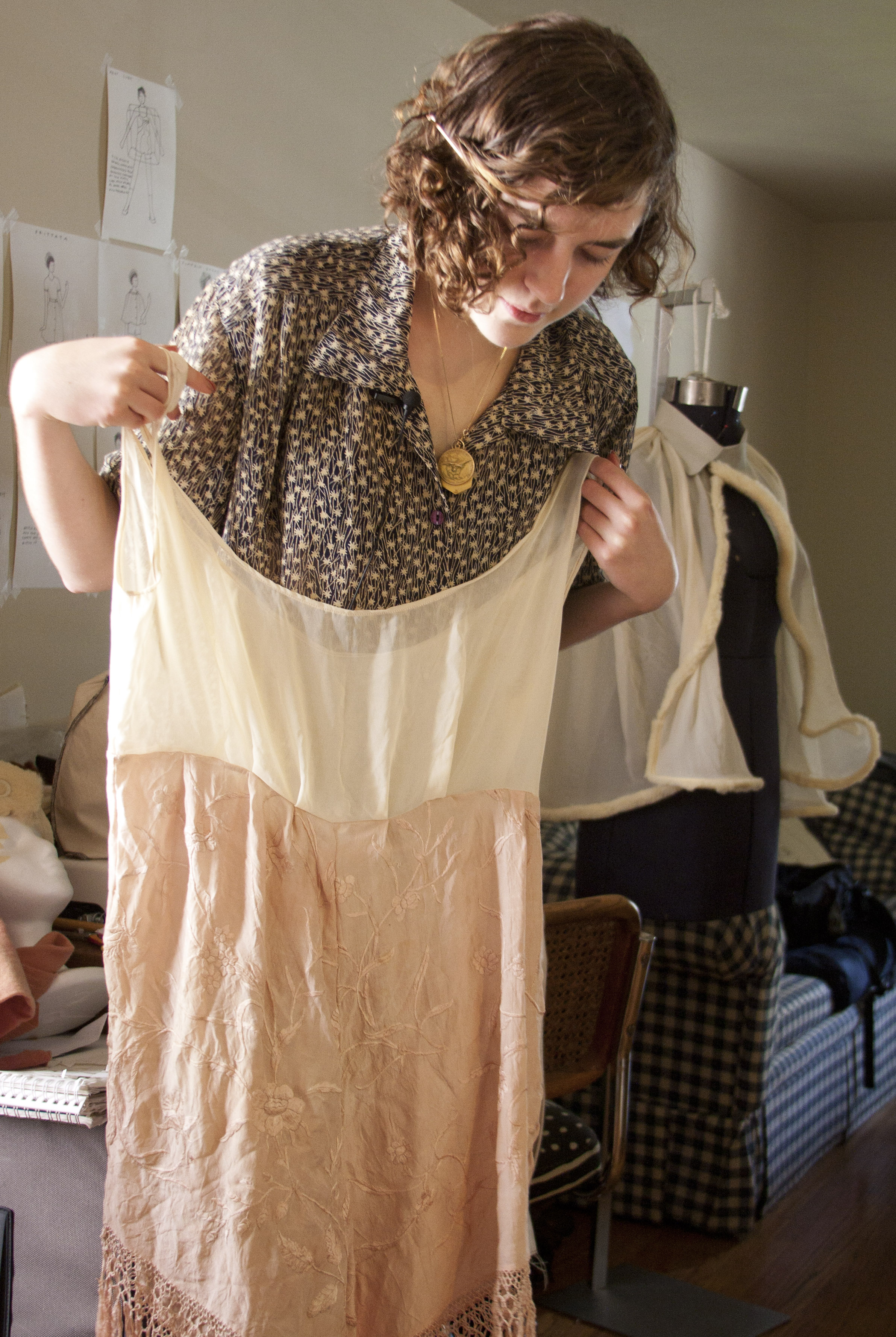Food coloring: natural dyes

Second-year Design | Media Arts student Anna Reutinger holds a dress dyed with cranberry juice.
By Andra Lim
May 5, 2011 12:14 a.m.

Anna Reutinger, a second-year Design | Media Arts student, dyes her own clothes in her Westwood apartment.


Dipping a strainer into a pot of boiling water, Anna Reutinger catches chunks of beets ““ slick, dark purple roots streaked with fuchsia. For about an hour, they have been steeping, staining the water with their vibrant hues.
In the bath of dye, Reutinger submerges two pieces of white cloth, which she previously soaked so the color could easily slip into their fibers.
When she lifts the fabric out of the bath seconds later, it is already light pink. To darken the shade, she puts the cloth back, letting it drink in the reddish juices for a little longer.
As for the beets, which lie steaming in a clear dish, she plans to store them in a jar, preserving their pigments to tint other dye baths or color sheets of paper.
Reutinger, a second-year Design | Media Arts student, is experimenting with natural dye for a food-themed fashion line.
Her palette stems from basic grocery store items, including cranberry juice, purple cabbage and coffee.
“It’s interesting to turn the kitchen inside out ““ take ingredients and repurpose them,” Reutinger said.
This spring, she will present her work at the annual fashion show hosted by Fashion and Student Trends, a UCLA student group.
Leo Daube, a second-year ethnomusicology student and a model for Reutinger’s line, said Reutinger’s naturally dyed fabric smooths the traditionally hostile relationship between food and fashion.
“Clothes can be both beautiful and kind to the earth,” he said. “You don’t have to sacrifice your conscience to make a beautiful piece of work.”
Though natural dyeing is an environmentally friendly alternative to regular dye, which can contain unsafe chemicals, it has not garnered much popularity, Reutinger said.
Natural fabrics can be expensive and hard to find. And the process only produces muted colors ““ lavender rather than royal purple, rose pink rather than hot pink.
Reutinger first became immersed in the dyeing process in middle school, when her mother took a fiber arts class for her associate’s degree in the arts. On the weekends, Reutinger would help her mother dye any white clothing they could find in their closets.
“I ended up with a lot of green underwear,” Reutinger said.
When Reutinger got back into dyeing last fall, she possessed just a few scraps of information about techniques. She turned to her mother for reminders about dyeing methods the two used, such as batik ““ creating a design by melting wax on the fabric before soaking it in dye.
The Internet also provided Reutinger with a few tips, and a friend showed her a craft and hobby book that included a spread on natural dyeing.
She knew that color fixes well to non-synthetic fabrics, such as cotton and silk.
She knew that dye baths need a spoonful or two of mordant, a substance that helps the pigments stick.
And she knew that certain foods were more likely to produce rich colors ““ onion skins, for example, were traditionally used to create dye for Easter eggs.
She also performed her own color tests while grocery shopping, rubbing leaves of vegetables against her skin to see if they left a trace.
Still, natural dyeing is a technique grounded in unpredictability and guesswork, Reutinger said.
The color of every swatch she dyes is the result of numerous variables, such as the type of mordant and cloth, or the amount of time the fabric spends soaking.
Some of the greatest surprises have come from the food itself, Reutinger said.
Red onion skins leaked a greenish yellow color into the water. And coffee, when paired with a particular mordant, can produce a green shade.
“I love the variation that you can get. It’s no fun to just buy a dye from the box, and it tells you what color it will turn with this fabric,” Reutinger said.
Her trial and error approach has its drawbacks. One such error happens when Reutinger finally removes the fabric from the beet dye bath.
She’s left the cloth in too long and the juices have seeped out, returning the fabric to its original cream hue.
For Reutinger, though, this occurrence is simply a part of the challenging, colorful experience of natural dyeing.

